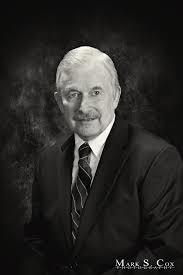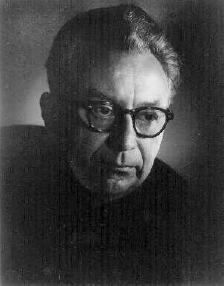Symphonic Band
THE CRANE SYMPHONIC BAND
Conducted by Dr. Brian K. Doyle, the Crane Symphonic Band is SUNY Potsdam’s oldest wind band. James Garfield, a 1905 Potsdam Normal School graduate, established the band as The Normal Band in 1926. Although Garfield referred to the group as the Symphonic Band as early as 1940, the ensemble went through several official name changes before Professor Harry Phillips settled permanently upon the current name. Guest conductors have included Percy Grainger, Edwin Franko Goldman, Vincent Persichetti, Captain William J. Stannard (founder of the U.S. Army Band “Pershing’s Own”) and Colonel William Santlemann (U.S. Marine Corps Band, “The President’s Own”). The Symphonic Band has premiered numerous works, particularly by Crane faculty members Arthur Frackenpohl, Robert Washburn and Elliot Del Borgo.

ANDROMEDA
David Gillingham
Andromeda is a programmatic work – a space fantasy about a fictional flight to the Andromeda Galaxy, the largest galaxy next to our own Milky Way. The piece begins with an introduction capturing the mysteriousness of the unknown galaxy about to be explored. The section is permeated with unusual sounds, eerie chord progressions and a sense of reticence about the unknown captured through repeated ostinato in the piano and keyboard percussion. The section closes with a sense of calm but is quickly interrupted by the next fast section which seeks todepict the flight of the spaceship toward the Andromeda Galaxy using a dramatic theme in G minor characterized by shifting tonality, chromatic median relationships, and ascending/descending lines.
This segues to the next section which features a secondary lyrical theme in the B-flat Lydian which alludes to the beauty and wonder of the “new world”. But the music grows intense as the spaceship senses danger ahead. It is forced to negotiate through meteor showers and avoid black holes characterized by pounding percussion, dissonant bell chords, and overlapping dark chords between the brass and woodwinds. All of this danger is too much to bear, and the spaceship is forced to turn around and headfor home with the return of themain theme in G minor. The section reaches a climax and modulates to C major where a repeated pattern of eighth notes in the upper brass and woodwinds accompany an augmented version of the first theme in the low brass and woodwinds.
The spaceship encounters more danger on its return depicted by ascending chromatic lines and dissonant chords. A dramatic descending chromatic chord progression signifies the ship’s descent back into the safety of our own galaxy. The second theme is heard again in the trumpets and horns accompanied by repeated eighths in the woodwinds alluding to the memory of the Andromeda galaxy. The music becomes calm, and a reflective coda follows using motives of the second theme bringing the piece to a quiet conclusion.
Program Note by David Gillingham

SHATTERING STARS
Joni Greene
Shattering Stars is part of my “James Webb Space Telescope Series” which features music based on images from the most advanced space observatory, the James Webb Space Telescope (JWST). Orbiting 1 million miles from Earth, the JWST far surpasses previous telescopes such as Hubble Shattering Stars is a journey through the lens of JWST towards the youngest supernova ever observed inourgalaxy,CassiopeiaA.Atonly11,000light‐yearsfromEarth,itcontainssupernova materials of stardust and heavy elements.
In order to present a soundscape illustrative of the process of a supernova, Shattering Stars explores instrumental color and light. As a composer with synesthesia, I see light and color when I hear sound creating a compositional process I call organized color. While it is common for compositions to feature singable melodies and a hierarchy of ensemble section roles, Shattering Stars uses melodic fragments that build upon each other and pass through the concert band. Everyone has an equal role to play as the idea of shooting light from afar comes closer into view. As players progress through the work, light intensity is portrayed through the stacking of short rhythmic and melodic ideas. As described by NASA, the JWST captures “mottled filaments of bright pink studded with clumps and knots within the supernova.” In Shattering Stars each instrument creates a unique color which when combined with a four‐note repeating 16th note pattern, illustrates the idea of chasing light, which finally explodes, shattering its star by the final measure.
Program Note by Joni
Greene
PROGRAM
NOTES



Carol Barnett
The Cyprian Suite is one of a series of works written following a trip to Cyprus in 1999. Each of its four movements is based on a Cypriot folk song. The first, “Servikos,” is an instrumentaldance in Serbian style, often played on the violin. In the second, “Aya Marina, ” a mother asks Saint Marina to take her baby to the world of sweet dreams and bring it safely back. She entrusts her baby to sleep, which will take her child and give it back to her grown up like a cypress tree, with branches extending from East to West. In the third, “Exomológhisis,” a man who had a lot of love affairs went to his priest to confess. The priest advised him to start a new life and stop having affairs. The man replied, “Father, if you deny the Holy Communion and the Divine Service, then I will deny love.” In the last song, “Agapis Tin,” the singer complains, “I loved her from the bottom of my heart, but she was indifferent, and I have suffered.”
Program Note by Carol Barnett
SERENADE NO 11 FOR BAND, OP.85
Vincent Persichetti
In September 1960, Frank Battisti and the Ithaca High School Band commissioned Vincent Persichetti to write a new work for their ensemble. The resulting Serenade for Band was the 11th of 15 “night music” suites Persichetti composed for a variety of single or multiple instruments This serenade is in five movements, each short in length, featuring a descriptive title: Pastorale, Humoreske, Nocturne, Intermezzo, and Capriccio. Persichetti’s Serenade No. 11 was premiered in April 1962with the composer conductingthe Ithaca HighSchool Band Other Persichetti works for band include Symphony No. 6, Divertimento, Pageant, Three Chorale Preludes, and Celebrations for Chorus and Wind Ensemble
As Donald Morris stated in his dissertation on Persichetti: Persichetti’s works for band “represent an important body of literature within the bandrepertoire...[he]wasamajorcomposerwithanationalreputationwhochose to write for the band without apology for the medium. He did not write down to the band, he did not write ‘educational music,’ and he did not write formula pieces. He wrote music for ‘a wonderful combination of wind instruments.’”
BALLAD FOR BAND
Morton Gould
In 1946 Morton Gould somehow found a few minutes to satisfy a request from conductor Edwin Franko Goldman to write a piece for his renowned Goldman Band. The result was the reflective and sensitively scored Ballad for Band, a work inspired by African American spirituals. In an interview with Dr. Thomas Stone, Gould offered insight on how the spiritual influenced this music:
I have always been sensitive to, and stimulated by, the sounds that I would call our “American vernacular” jazz, ragtime, gospel, spirituals, hillbilly. The spirituals have always been the essence, in many ways, of our musical art, our musical spirit. The spiritual is an emotional, rhythmic expression. The spiritual has a universal feeling; it comes from the soul, from the gut. People all over the world react to them ... I am not aware of the first time I heard them. It was undoubtedly a sound I heard as a child; maybe at a revival.
Morton Gould offers the following additional commentary:
Ballad for Band is basically an introverted piece that starts slowly, is linear, and has a quiet lyricism; it is not big band in the sense that there is little razzle-dazzle. A discerning listener who is programmed to appreciate the nuances and subtlety of a contemporary piece would respond favorably to this, but others merely find it from relatively pleasant to slightly boring. Only certain listeners respond to what this piece represents musically.
CYPRIAN SUITE
It also captures the spirit of popular music and dance forms. The beauty of the melody can hide the complexities of theme exchanges within the sections of the band. Antecedent-consequent phrases play off each other and build tension. Accents, syncopation, and lively rhythmic patterns complement the lush harmonies of the chord structures
Program Note by The United States Marine Band “The President’s Own”

MASQUE
Kenneth Hesketh
The Masque has had a varied history, certainly a varied spelling (masque, maske, even maskeling). However, the historian E.K. Chambers in his book The Medieval Stage defines the word in the following way: "A form of revel in which mummers or masked folk come, with torches blazing, into the festive hall uninvited and call upon the company to dance and dice."
The above description, I think, can also serve as a description to the piece. The main theme is certainly bravura and is often present, disguised, in the background. The form of the piece is a simple scherzo-trio-scherzo. Colourful scoring (upper wind solos, trumpet and horn solos alternating with full-bodied tuttis) with a dash of wildness is the character of this piece I hope it may tease both players and listener to let their hair down a little!
Program Note by Kenneth Hesketh







